On a personal note……….
Photo Credit: HelloLovely.com 2020
During the global COVID-19 Pandemic, I have found myself rediscovering the joy of cooking. For many of us, it has become a necessity with various degrees of success.
I also discovered that my pantry really does look like a global food market and it is something that I always took for granted. I have spices for around the world, that I use on a regular basis to add a new zip or zing to a standard dish in my weekly rotation of meals. In fact, I have done some of my best cooking last year and I do hope to continue.
Basically this series of essential pantry items based on global cuisines was borne out of the desire to simplify something as complex and wide-reaching as a national cuisine; to break it down in an effort to better understand the key flavors and components that truly make a particular country’s food. It is the pantry where the building blocks of any dish starts begins, with ingredients that are always well-stocked and on-hand.”
As we continue the series of blog entries about global pantries, we would remiss in not mentioning the cuisine of France. Whether you are a beginner or a seasoned home cook, here are some of the essential ingredients that every cook needs to start cooking French cuisine at home.
So,…….
What are the things that define French cuisine? The answer isn’t an easy one and it’s likely to vary widely depending on who you ask. From Michelin star chefs to Julia Child to Jacques Pepin, beef Bourguignon to bouillabaisse, French cuisine is rooted in tradition but characterized by the diversity of its regions and a general reverence for quality ingredients. But if you look closely at the culinary origins of just about every French dish, you will see some patterns, and whether it’s a base of butter or a finishing flourish of fleur de sel, the key ingredients for a well-stocked French pantry are ones you’re probably familiar with—they might even already be staples in your repertoire!
You can cook any style of French cuisine in your own kitchen, from brasserie classics like steak frites and salade Lyonnais to lofty cheese or chocolate soufflés.
Even if you don’t feel like turning on the stove, you can build a wonderfully satisfying French meal out of bread, cheese, pâté, and wine. So stock your pantry with these French essentials and you’ll always have options for breakfast, lunch, dinner, and dessert.
Dairy
European-style Butter
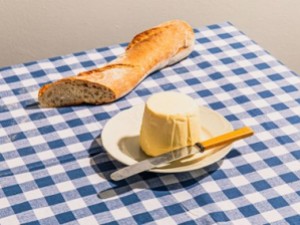
First of all, one must understand that not all butters are created equal, and no French pantry would settle for butter with anything less than 82% fat. It should also be cultured for a tangier, more savory taste that sets it apart from other butters. Rich French butters are often salted (but not always) and might be a bit more expensive than your average stick or block of butter, but they are so worth the splurge! A good unsalted French butter is essential to sautéing, mounting sauces, and making buerre blanc.
Heavy whipping cream (full cream, pure cream)
A splash of cream added to pan juices makes a great quick sauce for mussels, chicken, or steak.
Crème fraiche
A quality French crème fraîche will be silky smooth with a slight tang and leave a soft, buttery flavor on your palate. Use it in lieu of heavy cream for savory pan sauces or serve it alongside a rich dessert to help cut the sweetness.
Comté Cheese
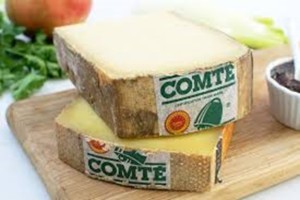
Where would we be without French cheeses? The best of the best and easiest for everyday use is Comté—a semi-hard, subtly funky, nutty cheese made from unpasteurized cow’s milk in Eastern France. It’s creamy pale color goes and capacity for extreme meltability makes it my number one for casseroles and gratins—French or otherwise.
Hard Cheese
French cheese is amazing, and properly stored, it can keep for quite a while.
Emmental Cheese
Emmental, Emmentaler, or Emmenthal is a yellow, medium-hard cheese that originated in the area around Emmental, in the canton of Bern in Switzerland. It is classified as a Swiss-type or Alpine cheese.
Emmental was first mentioned in written records in 1293, but first called by its present name in 1542. It has a savory but mild taste. While the denomination “Emmentaler Switzerland” is legally protected, “Emmentaler” alone is not; similar cheeses of other origins, especially from France the Netherlands, Bavaria, and Finland, are widely available and sold by that name.
Emmenthal has very good melting properties, which makes it ideal for cheese fondue or any dish that requires melted cheese, such as gratins and casseroles, grilled cheese sandwiches, pasta, and egg dishes. It can also be eaten cold, layered into sandwiches, or served on a cheese platter with fruit and nuts.
Gruyère Cheese
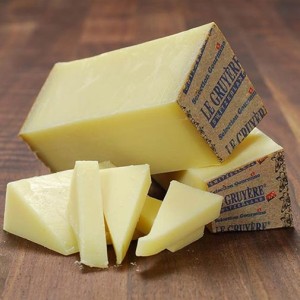
Gruyère is a good melting cheese, particularly suited for fondues, along with Vacherin Fribourgeois and Emmental. It is also traditionally used in French onion soup. Consider keeping Gruyere on hand for gougeres and Croque Monsieur. a classic French toasted ham and cheese sandwich. Gruyère is also used in chicken and veal cordon bleu.
Fresh Eggs
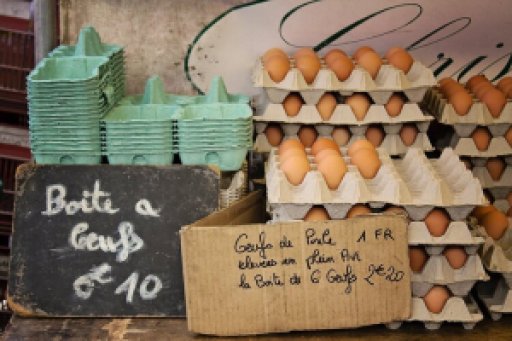
Eggs are required for fluffy souffles, creamy quiches, and perfect French omelets.
Baking
High-quality Chocolate

France might not be the first country you think of when you think of chocolate, but it’s a well-known fact that the French have a sweet spot for it From luxurious pralines lining shelves in Parisian chocolateries to the beloved pain au chocolat, many French kitchens have a stock of chocolate for nibbling or baking. Valrhona is one of the premium French brands known around the world for high quality chocolates for all purposes.
A good French baking chocolate is tempting to nibble, but keep it on hand for making mousse, ganache, éclairs, and other delicious desserts.
Almond Flour

If you’re also interested in French baking, Chef Altieri recommends keeping some Bob’s Red Mill Super Fine Almond Flour (2 Pounds) on hand. “not the most common ingredient used in the States, it is the base of many classic French pastries, and I truly can’t imagine baking without it.” It’s critical in macarons and helps form the basis of frangipane tarts and the filling for almond croissants. Though not beholden to a specific brand, Chef Altieri reommends that it is best to get “blanched, superfine-ground” almond flour for baking.
Produce
Garlic
Garlic is très Gallic. It’s used in aioli, persillade, and countless soups, sauces, and other dishes; the average French citizen eats 1 ½ pounds of garlic per year.
Leeks
Leeks vinaigrette is a classic French dish, but they’re also used for soups and tarts.
Onions
Onions are the star of that classic French soup, of course, but also one of the three key ingredients in mirepoix, which underpins many French sauces and braises.
Dried Mushrooms
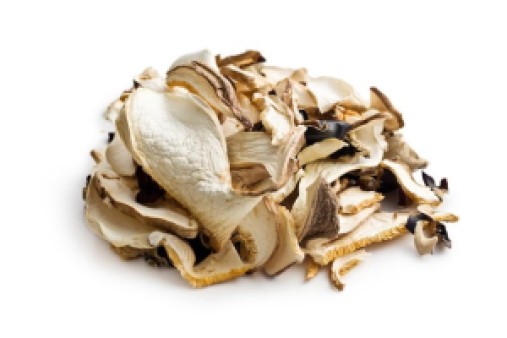
Dried mushrooms can be rehydrated for rich, creamy soups, vol-au-vent, or mushroom duxelles.
Mirepoix

A mirepoix (/mɪərˈpwɑː/ meer-PWAH; French: [miʁ.pwa]) is the aromatic flavor base of many a French stock, soup, and stew. It is made of a mix of diced carrots, celery and onions (and sometimes leeks) that are sweated ( slowly cooked—usually with butter, oil, or other fat) for a long time on low heat without coloring or browning, as further cooking. The key is not to get them brown or caramelized, but simply to urge the vegetables to release their natural sweetness. It is a long-standing cooking technique in French cuisine.
Canned and Dry Goods
Canned Tomatoes
Canned tomatoes and tomato paste will be useful for building flavor in several French stews and braises, like boeuf bourguignon and bouillabaisse.
Dry Lentils
Dried Puy lentils, or French green lentils, make a great simple side dish,
Tarbais Beans
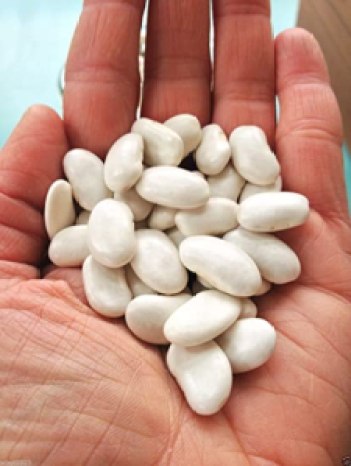
Haricot Tarbais are heirloom beans originally from the New World and transplanted in France . Its has a sweet, milky flesh and thin skin. Certified as beans grown the traditional way in a specific region, these beans are the ideal choice for cassoulet. Tarbais beans are also perfect for chili, braising with pork and greens, and can replace white beans in any recipe.
As a side dish, to cook these beans as they would in France, simmer with carrot, onion, garlic, peppercorns, and a bouquet garni (bay leaves, celery leaves, fresh parsley, and/or fresh thyme tied with string or placed in a cheesecloth bag). For an extra-rich broth, throw in a thick slice of pancetta or a ham hock.
French Bread
Fresh bread is a French favorite, particularly baguettes and boules. Eat for breakfast with a coffee, or after dinner with a bit of cheese.
Meats & Fish
Pâté

You can make fresh pâté, or buy shelf-stable versions to keep on hand when you have a hankering for a Gallic snack. Rillettes and foie gras work too.
Saucisson
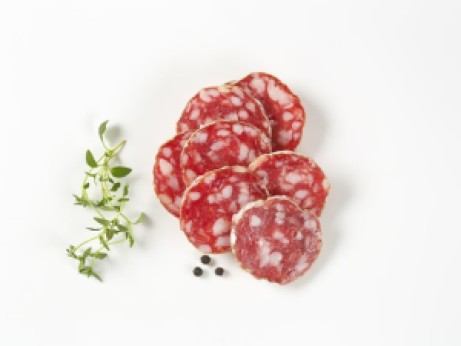
Saucisson, or French dry sausage, is another great snack to keep in your larder.
Sardines
If you’re a fan of fish, stock some French sardines or tuna in your pantry, maybe alongside some canned escargot if you savor snails.
Spices and Herbs
Salt
Fleur de sel

French for “flower of salt,” fleur de sel is harvested by hand from seawater. It is primarily used as a finishing salt to add s a delicate and light briny crunch to finished French dishes, elevating the flavors of a sweet or savory dish it’s sprinkled on. Since the real stuff is quite expensive thanks to the laborious process by which it’s harvested, you do not have to use it for your everyday cooking—keep it as a special ingredient to finish off your dishes. Try a sprinkle on a chocolate mousse or as finishing salt for fluffy scrambled eggs.
La Baleine Fine Sea Salt

It seems basic, but a high-quality salt is a must-have in a French kitchen, and Eric Ripert, the chef and co-owner of Le Bernardin, calls this sea salt his essential pantry item. “I love La Baleine Fine Sea Salt because the delicacy and finesse of the salt itself allows me to be very precise with seasoning. I’ve been cooking with it all my life, and it’s just my favorite pantry staple to extract the essence and flavor of any ingredient.”
Fleur de Sel de Guerande
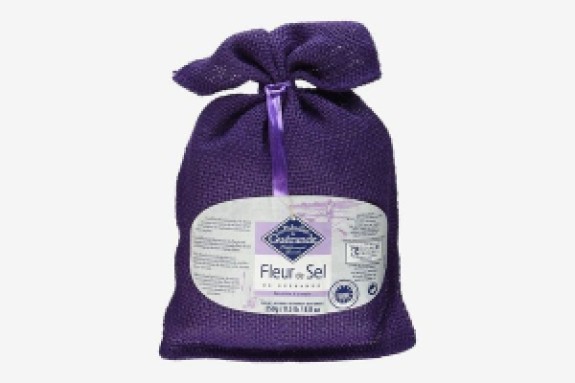
For a sea salt that’s a little more coarse, executive chef Laëtitia Rouabah at Alain Ducasse’s Benoit calls Fleur de Sel de Guerande a must-have. “I use it every day as a finishing salt, or to flavor and season meat, fish, and vegetables.” It’s hand-harvested from Brittany and has a flakier texture than the La Baleine Fine Sea Salt.
Bay Leaves
The sweet bay or bay laurel is a perennial evergreen tree which is the only form of laurel to be used in cooking.
Bay leaves can be used either dried or fresh to flavor sauces, stews or used in marinades. They are indispensable in a bouquet garni, or ‘the broth posy’ as it is also known, when used to flavor good cooking. Bay adds its spicy flavor to meat and vegetables, fish, soups and stews. You can store a leaf or two in a jar of rice or add it to your rice pudding for a delicious flavor.
Fresh Herbs
Fresh herbs also come in handy, like parsley and thyme for making bouquet garni. Grow these in little windowsill pots if you can.
Dried Herbs
Dried herbs are of course invaluable but in France they are only used when the fresh herbs are not available. You should buy dried herbs in small quantities and keep in an air tight container, in a dark cupboard.
Chervil
Chervil is a delicate herb almost fern-like with a refreshing spicy flavor. It can be used generously. Its leaves resemble those of French parsley. The leaves have a delicate flavor and are used to enhance chicken, fish, veal, salads, egg dishes and tomatoes. It is a favorite one of the French herbs for giving flavor to soups, sauces and omelets.
Chives
Chives are an important herb in the French kitchen and they have the most delicate onion flavor which make it a wonderful seasoning for many dishes. The grass-like leaves are used to garnish soups, egg dishes, fish, chicken and veal. They are delicious with salads and most vegetables.
Fennel
Fennel is a beautiful tall and graceful perennial herb with fine feathery green leaves and bright yellow flowers. It looks very much like dill but the flavor is a sweet anise which is very different.. Fennel is most well known with fish and the seeds or leaves give an excellent flavor when added to the water for poached or boiled fish. The leaves give a wonderful flavor to fish sauces or will counteract the oiliness of rich fish. The leaves can also be added to salads or raw or cooked vegetables. The seeds can also be used whole or ground to flavor bread, savory biscuits, soups and many sweet pickles.
The bulbous root used as a vegetable comes from Florentine variety but this is much more difficult to cultivate.
Marjoram
Marjoram is a relative to the mint family. You get the most flavor from Marjoram if you use the fresh leaves rather than dried marjoram. There are three types of marjoram but it is the sweet marjoram that has the best flavor for cooking. It is a compact and bushy plant with small flowers which look like little green knots. Sweet marjoram is grown from seed in the spring and the seedlings planted out in early summer.
The delicate, piney taste of marjoram complements many French beef, lamb, and veal dishes and is excellent with vegetables such as marrow and potatoes.. It’s also a component of herbes de provence, the traditional Provençal mixture that also includes rosemary, thyme, oregano and lavender. It is often included with other herbs in a bouquet garni. Although Marjoram is sweet and mild, it is also at the same time minty and has a hint of citrus. Marjoram blends very well with Bay Leaves, pepper, and Juniper.
Fresh Nutmeg
This warm spice adds a touch of nuttiness and fragrance to creamy sauces such as béchamel. French bakers also incorporate it into desserts, like pain d’épices, a spice cake.
Fresh Parsley
Persil plat or persil de Naples is flat parsley (sometimes it is called Italian Parsley), and persil frise or persil double is curly parsley. Both types of parsley are grown in different strains and both may be added to nearly every form of savory dish; sometimes for flavor, at times for color and often merely for decoration. The flat leaf parsley which undoubtedly has the better flavour. The chopped leaves can be added to green salads, soups, sauces and cooked vegetables. It is beautiful when fried in oil until crisp and added to accompany fish. Parsley added to dishes with garlic will soften the flavour.
Rosemary
Rosemary is a relative to the mint family and the name is derived from its Latin origin to mean “dew of the sea.” Rosemary is very common in Mediterranean cuisine and has somewhat of a bitter astringent taste to it. Rosemary added to lamb is a classic favorite but is equally good with other meat dishes and with fish such as halibut. Try it with eggs and cheese , in biscuits/cookies, jams and jellies. It can also be added to fruit salads, wine and fruit cups for an unusual flavor.
Saffron


Saffron is a spice derived from the flower small purple flower known as the Crocus sativus, commonly known as the “saffron crocus”. Saffron is believed to be native to the Mediterranean, Asia Minor, and Iran, although Spain, France, and Italy are also now primary cultivators of the spice. What we use for that distinctive yellow color, sweet-herb smell, and bitter taste is actually the vivid crimson red stigma (plural stigmata), called threads, are the pollen-germinating part—at the end of the red pistil, the female sex organ of the plant, are collected and dried for use mainly as a seasoning and colouring agent in food.
Known as the most expensive spice in the world. Its costliness has to do with its harvesting. Only a small amount of each saffron flower is used, and all harvesting must be done by hand. These bright red threads are used in Mediterranean seafood dishes of Southern n France, such as Bouillabaisse.
Sorrel
 The true French variety of sorrel is the best to use for your cooking as it has the best flavour. Sorrel has lovely fleshy green leaves and has an astringent flavor. This is one of the French herbs often served as a purée or to give a good flavor to sauces, omelets or soups.
The true French variety of sorrel is the best to use for your cooking as it has the best flavour. Sorrel has lovely fleshy green leaves and has an astringent flavor. This is one of the French herbs often served as a purée or to give a good flavor to sauces, omelets or soups.
Tarragon
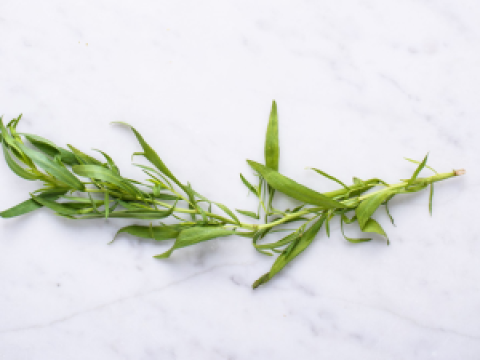
Tarragon is a licorice-flavored herb with a distinctive flavor and one of the best culinary French herbs for savory cooking . No French cook would be without it! Tarragon leaves give a good flavour to green salads and raw vegetable salads. Steep the herb in white wine vinegar and you have a wonderfully flavored tarragon vinegar. Tarragon can be added to roast meats, poultry dishes and fish dishes. Use it in a light buttery sauce to accompany mild vegetables such as marrow or artichokes.
Thyme (fresh or dry)
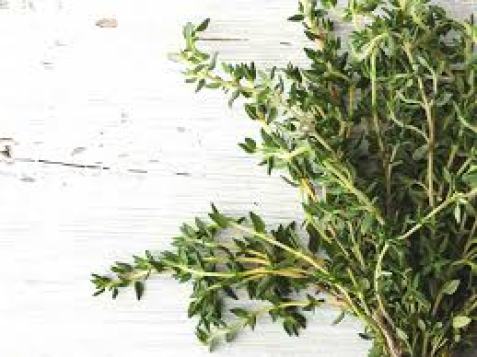
Both fresh and dry thyme are used often in French cooking, either alone or in combination
Thyme has a strong flavour so should be used sparingly. It is added to meats, fish, soups, stews, and of course herb sauces.
Bouquet garni

Usually tied together with string or wrapped in a cheese cloth, the “garnished bouquet” is used to flavor soups and stocks. It usually consists of sage, parsley, thyme, bay leaf and peppercorns.
Fines herbes
These include tarragon, chives, chervil and parsley. They’re referred to as such due to their delicate flavors. As opposed to more robust French herbs, like oregano, marjoram, rosemary and thyme, their delicateness make them more suitable for seasoning at the end of a dish, rather than cooked within the dish.
Herbes de Provence

A Provençal mixture of dried herbs that can include marjoram, rosemary, thyme, oregano, savory, and lavender. Every chef will have his/her own mix and may include other herbs. This combination is used for meat, fowl, fish, soups and stews.
Persillade
A mixture of chopped parsley and garlic (sometimes with oil and vinegar), cooked or added raw at the end of cooking. This is a classic addition to roasted potatoes.
Condiments
Cornichons

French cornichons add a nice piquant crunch to your terrine or pâté.
Dijon Mustard
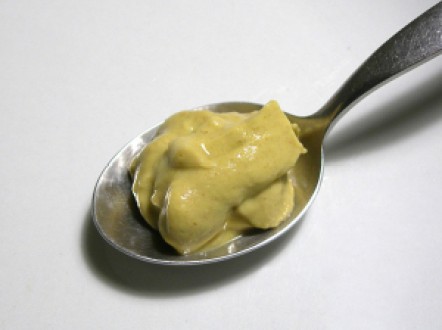
Dijon mustard (French: Moutarde de Dijon) is a traditional mustard of France, named after the town of Dijon in Burgundy, France, which was the center of mustard making in the late Middle Ages and was granted exclusive rights in France in the 17th century. First used in 1336 for the table of King Philip VI it became popular in 1856, when Jean Naigeon of Dijon replaced the usual ingredient of vinegar in the recipe with verjuice, the acidic juice of unripe grapes.
The main ingredients of this condiment are brown mustard seeds (Brassica juncea) and white wine or a mix of wine vinegar, water and salt designed to imitate the original verjuice, It can be used as an accompaniment to all meats in its usual form as a paste, or it can be mixed with other ingredients to make a sauce.
Available both in a smooth or whole grain form, Dijon mustard is a key ingredient for a classically peppy French vinaigrette. It can also add depth and tang to tons of sauces, be used as a rub on a big piece of meat before it’s roasted, or even be mixed with mayonnaise for sandwiches—when it can then be referred to as Dijonnaise, your new favorite word.
You can also find a variety of Dijon mustards that are made with tarragon, such as Clovis, which is excellent when cooking a fish and chicken dish.

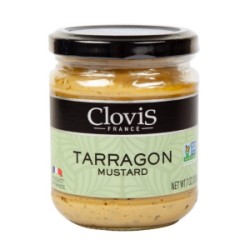
Olives
Picholine olives are common in France and have a nice nutty flavor that’s worth seeking out
Red and White Wine Vinegars
French wines are some of the finest in the world, and great winemaking regions also happen to produce—not surprisingly—great wine vinegars. For an authentic taste for your dishes, always opt for a really nice red and white wine vinegars and use them to make salad dressings or cut the richness of a braise. For more on vinegars, check out this complete guide to vinegars.
Melfor Vinegar

Antoine Westermann, the chef and owner of Le Coq Rico, has fond childhood memories — “What we call la Madeleine de Proust,” he says, “the memory of a taste that opens your senses and mind and stays forever a part of you” — of one specific vinegar from Alsace, the region on the border of Germany where he’s from. This honey-and-herb vinegar, called Melfor, is less acidic than traditional vinegars and makes a great base for a salad dressing.
$15 AT AMAZON
Huilerie Beaujolaise Vinaigre De Cider (Apple Vinegar)

For another hit of acid, Nicholas Elmi, chef and partner at Royal Boucherie and Laurel in Philadelphia, recommends any of the fruit vinegars from Huilerie Beaujolaise. “From quince to blueberry to Calamansi, these fruit vinegars are all really well-rounded and have a lot of pop. They add a subtle nuance to sauces — both savory and sweet.”
Fruit Jams
Christine Ferber Jam
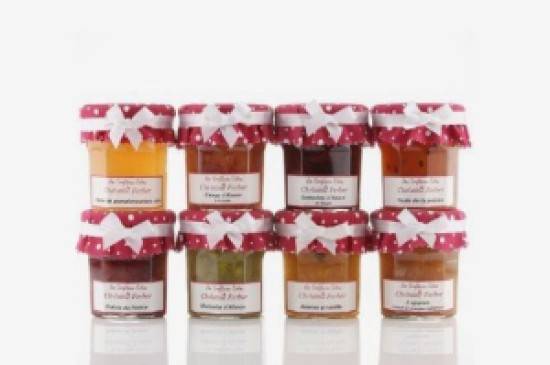
Several of the chefs cited preserves, jams, jellies, and marmalades as their must-have pantry items. Chef Alessandra Altieri, director of Bouchon Bakeries, calls confiture, or preserves, “a staple in every pastry kitchen,” to be used at the bottom of tarts or simply spread on a warm baguette with rich butter. As for brands, Altieri recommends Christine Ferber, noting that it “can be hard to find,” though it is available online.
Bonne Maman Blackberry Preserves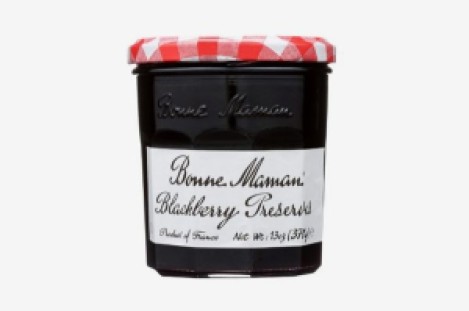
For a more readily available (and less expensive) option, Altieri likes Bonne Maman, calling it, “super classic” and the 13-ounce jar is easily found in many markets.
$8 AT AMAZON
Sengana Strawberry Extra Jam by Alain Milliat

Ben Sormonte, founding partner at Maman, loves Alain Milliat’s jams and marmalades. “I’ve had the pleasure of visiting Alain’s farm and saw firsthand how they carefully select their fruits for their juices, jams, and marmalades. You can really tell how they’ve been naturally vine-ripened and how his products really honor the integrity and flavor profiles of the fruits and vegetables he grows.” The strawberry jam, which is used in their cafés, is a notable favorite, though more floral-minded eaters might want the violet-fig jam.
Oils
Oil (peanut, sunflower or grapeseed)
Nyons Extra Virgin Olive Oil AOC

Though butter is a staple in French cooking, olive oil has its place, too, especially in those aforementioned vinaigrettes. Chef Westermann likes olive oil from Provence, specifically from the town of Nyons.
Beverages, Wines and Liquors
Wines
Obviously, wine is a must. Keep your favorite reds and whites on hand for sipping, but for cooking too, because you don’t want to make a dish you’ll eat with wine you wouldn’t drink.
For both cooking and drinking, it’s never a real French kitchen without some wine. Dry whites and dry reds can swing to your glass or the pot, but the rule of thumb for which ones to have around? The ones you like to drink!
- Red wine: cote du Rhone or Bordeaux style
- White wine: chardonnay, sauvignon, Riesling or Chablis
Cognac

French cognac is great splashed into pan sauce, and can be flambéed for crepes Suzette.
Armagnac

Armagnac (French pronunciation: [aʁmaɲak]) is a distinctive kind of brandy produced in the Armagnac region in Gascony, southwest France. It is the oldest brandy (and liquor) recorded to be still distilled in the world : in 1310, Prior Vital du Four, a cardinal, wrote its 40 virtues. In the past it was consumed as other liquors for its therapeutic benefits. Because the overall volume of production is far smaller than cognac production and therefore is less known outside Europe.
Armagnac is distilled from wine usually made from a blend of grapes including Baco 22A, Colombard, Folle blanche and Ugni blanc, traditionally using column stills rather than the pot stills used in the production of cognac, which is made only from ugni blanc grapes. The resulting spirit is then aged in oak barrels before release. Production is overseen by the Institut national de l’origine et de la qualité (INAO) and the Bureau National Interprofessionel de l’Armagnac (BNIA).
The traditional French gourmet dish ortolan has traditionally been prepared by force-feeding an ortolan bunting before drowning it in Armagnac and roasting it. The dish is now legally prohibited due to laws protecting the bird
Armagnac is generally enjoyed as after-dinner liqueur, at the end of a meal, served neat. It is best to enjoy it at room temperature, preferably in small glasses with a rather narrow rim to ensure aromas are concentrated. You can also warm the glass in your hand, to ensure this.
Grand Marnier

Grand Marnier (French pronunciation: [ɡʁɑ̃ maʁnje]) is a French brand of liqueurs. The brand’s best-known product is Grand Marnier Cordon Rouge, an orange-flavored liqueur created in 1880 by Alexandre Marnier-Lapostolle. It is made from a blend of Cognac brandy, distilled essence of bitter orange, and sugar
Aside from Cordon Rouge, the Grand Marnier line includes other liqueurs, most of which can be consumed “neat” as a cordial or a digestif, and can be used in mixed drinks and desserts. In France, this kind of use is the most popular, especially with crêpes Suzette and crêpes au Grand Marnier.
Champagne

Why not keep a bottle of real French champagne on hand for impromptu celebrations, or just whenever you’re feeling bubbly?
Champagne (/ʃæmˈpeɪn/, French pronounciation: [ʃɑ̃paɲ]) is a French sparkling wine. The term Champagne can be used as a generic term for sparkling wine, but in the EU and some countries it is illegal to label any product Champagne unless it came from the Champagne wine region of France and is produced under the rules of the appellation.This alcoholic drink is produced from specific types of grapes grown in the Champagne region following rules that demand, among other things, specific vineyard practices, sourcing of grapes exclusively from designated places within the Champagne region, specific grape-pressing methods and secondary fermentation of the wine in the bottle to cause carbonation.
The grapes Pinot noir, Pinot meunier, and Chardonnay are primarily used to produce almost all Champagne.
Champagne became associated with royalty in the 17th, 18th, and 19th centuries. The leading manufacturers made efforts to associate their Champagnes with nobility and royalty through advertising and packaging, which led to its popularity among the emerging middle class.
$ Dom Pérignon Vintage Champagne
Dom Pérignon Vintage Champagne

Moët & Chandon Impérial Brut Champagne
Which of the above ingredients would we find already stocked in your pantry? Have more questions about the French pantry? Let us know in the comments below.
Disclosure: As an Amazon Associate and member of other affiliate programs, we earn a very small commission from qualifying purchases of products that links within the text. These commissions help support our blog in providing you, our loyal followers, free access to our content.
Thank you for browsing and shopping! It is greatly appreciated.
Hello Friends!
All photographs and content, excepted where noted, are copyright protected. Please do not use these photos without prior written permission. If you wish to republish this photograph and all other contents, then we kindly ask that you link back to this site. We are eternally grateful and we appreciate your support of this blog.
Thank you!









You must be logged in to post a comment.